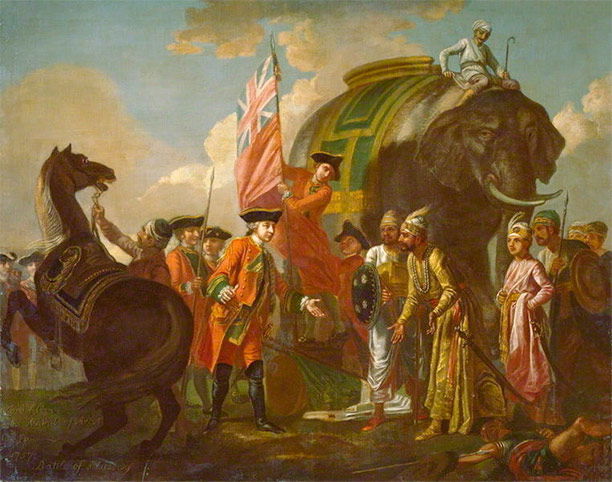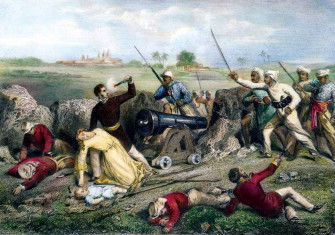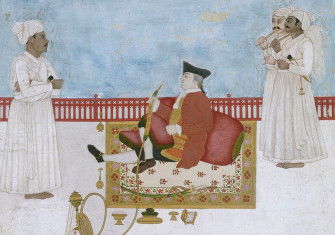The Battle of Plassey
The British victory at Plassey in Bengal, on 23 June, 1757, was a crucial event in the history of India.
 Though it was more of a skirmish than a battle, the British victory under Robert Clive at Plassey in Bengal was a crucial event in the history of India. The young Nawab of Bengal, Siraj-ad-daula, had taken Calcutta from the East India Company with a huge army in June 1756, when the notorious Black Hole episode occurred. It was not until August that the news reached the Company in Madras and not until October that Clive, now 32 years old, left for Calcutta at the head of a mixed European-Indian force of some 2,500 men. He drove Siraj’s army out early in January 1757.
Though it was more of a skirmish than a battle, the British victory under Robert Clive at Plassey in Bengal was a crucial event in the history of India. The young Nawab of Bengal, Siraj-ad-daula, had taken Calcutta from the East India Company with a huge army in June 1756, when the notorious Black Hole episode occurred. It was not until August that the news reached the Company in Madras and not until October that Clive, now 32 years old, left for Calcutta at the head of a mixed European-Indian force of some 2,500 men. He drove Siraj’s army out early in January 1757.
Clive decided that the best way to secure the Company’s interests in Bengal was to replace Siraj with a new and more pliant nawab. He found a candidate in a discontented elderly general named Mir Jafar. After complicated conspiratorial discussions and the promise of enormous bribes to all concerned, a secret agreement was smuggled into the women’s quarters of Mir Jafar’s house, which was being watched by Siraj’s spies, and Mir Jafar signed it.
Siraj knew or suspected there was a conspiracy against him, despite Clive’s earnest protestations to the contrary, and moved south to Plassey. On 13 June, Clive moved north with some 2,000 Indian sepoys and 600 British infantry of the Thirty-Ninth of Foot plus close to 200 artillerymen with ten field pieces and two small howitzers. Ambiguous messages were coming in from Mir Jafar and Clive was moving into a dangerous situation against heavy odds. He seems to have had a crisis of confidence and summoned his officers to a council of war on 21 June. The majority, including Clive, voted against action. At that point, according to his friend Robert Orme, Clive retired to a grove of trees where he stayed for an hour in meditation. On his return, he gave orders for the army to move on to Plassey.
The confrontation came on a cloudy morning north of the village of Plassey on the bank of the Hughli river. Clive’s army was drawn up in three divisions, as was the Nawab’s army of perhaps 40,000 men with its war elephants and more than 50 cannon. One division was commanded by Mir Jafar. After an opening cannonade, a crash of thunder at noon heralded a torrential downpour of rain that lasted half an hour. The British artillerymen quickly covered their cannon and ammunition with tarpaulins, but the enemy failed to do the same and their artillery was put out of action, so that when the Nawab’s army moved forward, assuming that Clive’s cannon were also out of action, it was met with a withering storm of fire. The enemy withdrew and Siraj, who distrusted his generals and had already been warned of impending defeat by his astrologer (who had possibly been bribed), lost his nerve when Mir Jafar advised retreat. When Clive’s army attacked again, Siraj fled on a fast camel. His demoralized army followed suit and when the British entered the enemy camp at about 5pm, they found it abandoned.
According to Clive, he lost 18 men, while he estimated the nawab’s dead as around 500. Siraj-ad-daula was killed by his own people and Mir Jafar replaced him. Clive, who was now effectively master of Bengal, skilfully bolstered Mir Jafar’s apparent authority while keeping him on leading strings. The skirmish at Plassey was critical to the East India Company’s triumph over its French rivals and, in the longer term, to the establishment of British rule in India.






